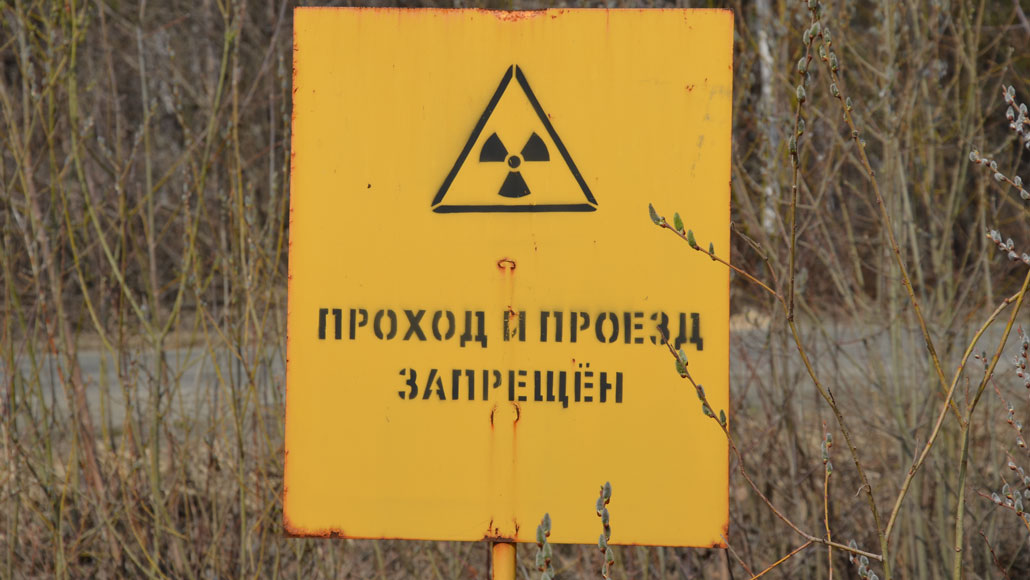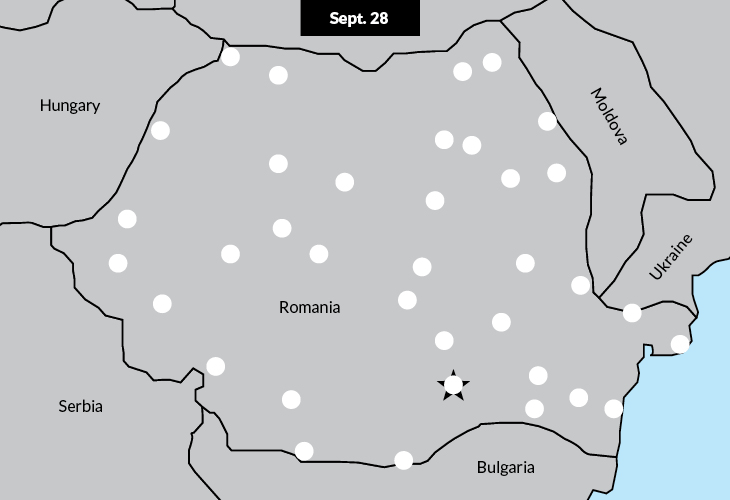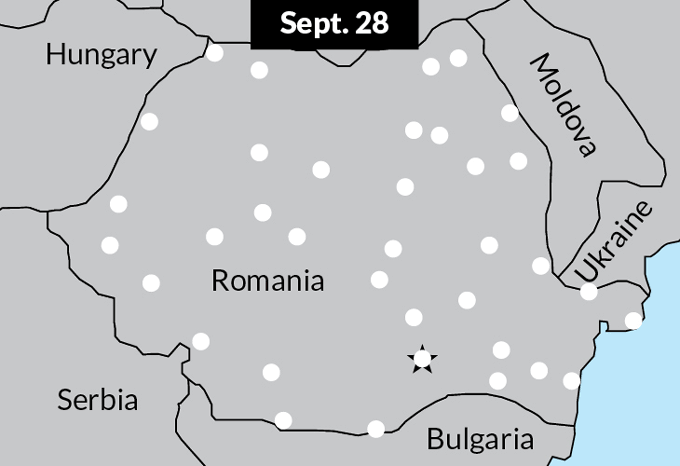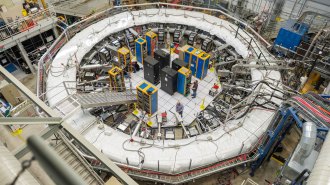How a 2017 radioactive plume may be tied to Russia and nixed neutrino research
A new study offers more evidence that a nuclear facility called Mayak was responsible for the cloud

RADIOACTIVE RELEASE Scientists have suggested a possible source for a cloud of radioactive material that swept over European countries in 2017: the Russian nuclear plant Mayak (a sign from the facility shown).
Kiselev Alexey/Shutterstock
- More than 2 years ago
It was a nuclear whodunit: A cloud of radioactive material was hanging over Europe, but no one knew where it was coming from.
The plume persisted for a few days in September and October 2017, detected by a network of atmospheric monitoring sites across Europe. Although not at levels dangerous to human health, the cloud was enough to raise alarm before dissipating.
“We were stunned,” says radioecologist Georg Steinhauser of Leibniz University Hannover in Germany. “We had never seen anything like this before.”
Shortly after the detection, scientists speculated that a nuclear facility in Russia, the Mayak Production Association near Ozersk, was the source. Now, in a study published online July 26 in the Proceedings of the National Academy of Sciences, Steinhauser and colleagues have laid out evidence supporting that claim. The cloud may have been released in a failed attempt to create highly radioactive material for an experiment in Italy on neutrinos, subatomic particles that are spit out in certain types of radioactive decay, the team says.
The monitoring network, covering 22 countries across Europe, spotted small amounts of a version, or isotope, of the element ruthenium, called ruthenium-106. The radioactive isotope has 106 protons and neutrons in its nucleus, and is not found naturally on Earth.
Detectors in Romania tracked the plume as it moved west. Although the Romanian detectors measured some of the highest levels of ruthenium, the cloud’s shape indicated that it did not originate inside the country, the researchers say. Simulations of the atmosphere showed that air masses could have traveled from Mayak to Romania in several days.
European traveler
Detectors (circles) in Romania revealed a plume of radioactive ruthenium sweeping across the country from east to west over several days in September and October 2017. Red indicates detections of ruthenium-106; white indicates levels too low to measure. Bucharest is marked with a star.


The planned neutrino experiment, known as SOX, would have involved placing a powerful radioactive source next to a neutrino detector named BOREXINO at Gran Sasso National Laboratory near L’Aquila, Italy. Researchers were hoping to spot evidence of a hypothesized type of neutrino called a sterile neutrino (SN: 6/23/18, p. 7).
Producing the necessary isotope for SOX, cerium-144, required processing spent fuel from a nuclear reactor. That spent fuel contains a variety of radioactive isotopes, including ruthenium-106. Normally, spent fuel is left to cool for many years before being processed, so that some of the most hazardous radioactive isotopes have decayed. But the SOX experiment demanded relatively fresh fuel. “This was essentially something that had never been done before,” says neutrino physicist Jonathan Link of Virginia Tech in Blacksburg, who was once part of SOX. But Mayak had agreed to take on the challenge.
During the 2017 plume, a second radioactive isotope, ruthenium-103, was also detected at some stations. By comparing relative amounts of the two isotopes, the researchers were able to determine that the element had to have come from fuel that was about 2 years old, consistent with the neutrino source production requirements.
While an event such as an explosion at a nuclear reactor would release a variety of radioactive elements, processing of nuclear fuel involves isolating individual elements, and could result in specific isotopes, such as ruthenium-106, being released.
In an e-mail dated December 8, 2017, sent to members of the SOX collaboration and obtained by Science News, leaders of the effort wrote, “we learned that during the purification of the material unexpected problems occurred, yielding to a loss of activity as well as an increase of impurity levels.” After Mayak failed to produce the radioactive source it had promised, the SOX experiment was canceled.
Link, for one, had favored using a radioactive source that he says would have been simpler to produce, made of chromium. When news reports of the plume came out, “I already suspected … that I knew what happened,” he says.
In the new study, the researchers also refuted an alternative explanation for the plume — that a satellite carrying a radionuclide battery had burned up on entry. If a doomed satellite were the cause, measurements at higher altitudes should have had higher ruthenium concentrations, Steinhauser says. But the team found that the opposite was true.
Rosatom, the Russian state atomic energy corporation that oversees Mayak, denies that an accident took place. “Both the national regulator and experts from an independent international inquiry inspected the Mayak facility back in 2017 and found nothing to suggest that the ruthenium-106 isotope originated from this site, nor found any traces of an alleged accident, nor found any evidence of local staff exposure to elevated levels of radioactivity,” the agency said in a statement.
Editor’s note: This story was updated July 30, 2019, to include a response from Rosatom, the Russian state atomic energy corporation, received after the story was published.







